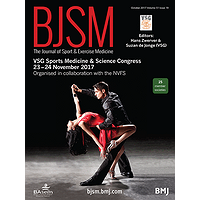Background The purpose of this study was to evaluate the effects of training load (TL) and well-being on injury and illness risk in youth soccer players.Methods Throughout a 20-week season, 75 female adolescent soccer players reported mood, fatigue, stress, soreness, sleep quality, sleep hours, TL, injuries and illnesses. Well-being measures were recorded from -3 (worst) to + 3 (best). TL was expressed as daily, weekly and monthly, as well as an acute: chronic workload ratio (weekly divided by monthly). Variables were compared between days with and without an injury, and with or without an illness. Poisson regression models were developed to predict daily injuries and illnesses using well-being and TL (z-scores) as predictors.Results 36 injuries and 52 illnesses were recorded. Days with an injury had lower (worse) daily mood (1.24 +/- 0.2 vs 1.16 +/- 0.1, p= 0.012) and higher daily TL (517 +/- 138 vs 440 +/- 158, p= 0.010). Average monthly TL was higher preceding days with an illness (12 442 +/- 409 vs 12 627 +/- 403, p= 0.043), while no differences were found with respect to other measures of TL or wellbeing. Worse daily mood (p= 0.011, OR= 0.012), higher daily TL (p< 0.001, OR= 1.98), and higher prior day TL (p= 0.040, OR= 1.34) were independent predictors of injury, while weekly (p= 0.005, OR= 1.50) and monthly TL (p= 0.007, OR= 1.54) were predictors of illness.Conclusions Lower mood and higher acute TL are associated with increased injury risk, while higher chronic TL increases the risk of illness. Monitoring wellbeing and TL may facilitate intervention to reduce in-season injury and illness.

Subjective well-being and training load predict in-season injury and illness risk in female youth soccer players
Review badges
0 pre-pub reviews
0 post-pub reviews
